- Home
- Patricia Cornwell
Book of the Dead ks-15 Page 2
Book of the Dead ks-15 Read online
Page 2
“I’ve been saying this all along. Once again, I’ll explain why. Since it seems you are confused,” Scarpetta says.
“We need to move on,” Benton says.
But they can’t move on. Captain Poma is so respected by the Italians, is such a celebrity, he can do whatever he wants. In the press he is called the Sherlock Holmes of Rome, even though he is a physician, not a detective. Everyone, including the Comandante Generale of the Carabinieri, who sits in a back corner and listens more than he speaks, seems to have forgotten that.
“Under normal circumstances,” Scarpetta says, “Drew’s food would have been fully digested several hours after she ate lunch, and her alcohol level certainly wouldn’t have been as high as the point-two determined by toxicological testing. So, yes, Captain Poma, her stomach contents and toxicology suggest she died shortly after lunch. But her livor mortis and rigor mortis suggest — rather emphatically, let me add — that she died possibly twelve to fifteen hours after she ate lunch at the trattoria, and these postmortem artifacts are the ones we should pay the most attention to.”
“So here we are. Back to lividity.” He sighs. “This word I have so much trouble with. Please explain it again, since I seem to have so much trouble with what you call postmortem artifacts. As if we are archaeologists digging up ruins.” Captain Poma’s chin rests on his hand again.
“Lividity, livor mortis, postmortem hypostasis, all the same thing. When you die, your circulation quits and the blood begins to accumulate in the small vessels due to gravity, rather much like sediment settling in a sunken ship.” She feels Benton’s 3-D glasses looking at her. She dares not look at him. He isn’t himself.
“Continue, please.” Captain Poma underlines something several times on his legal pad.
“If the body remains in a certain position long enough after death, the blood will settle accordingly — a postmortem artifact we call livor mortis,” Scarpetta explains. “Eventually, livor mortis becomes fixed, or set, turning that area of the body purplish-red, with patterns of blanching from surfaces pressing against it or constricting it, such as tight clothing. Can we see the autopsy photograph, please?” She checks a list on the podium. “Number twenty-one.”
The wall fills with Drew’s body on a steel table in the morgue at Tor Vergata University. She is facedown. Scarpetta moves the laser’s red dot over the back, over the purplish-red areas and blanching caused by lividity. The shocking wounds that look like dark red craters she has yet to address.
“Now, if you’ll put the scene up, please. The one that shows her being placed into the body bag,” she says.
The three-dimensional photograph of the construction site fills the wall again, but this time there are investigators in white Tyvek suits, gloves, and shoe covers lifting Drew’s limp, naked body into a sheet-lined black pouch on top of a stretcher. Around them, other investigators hold up additional sheets to block the view from the curious and the paparazzi at the perimeter of the scene.
“Compare this to the photograph you just saw. By the time she was autopsied some eight hours after she was found, her lividity was almost completely set,” Scarpetta says. “But here at the scene, it’s apparent that lividity was in its early stages.” The red dot moves over pinkish areas on Drew’s back. “Rigor was in its early stages as well.”
“You rule out the early onset of rigor mortis due to a cadervic spasm? For example, if she strenuously exerted herself right before death? Maybe she struggled with him? Since you’ve not mentioned this phenomenon so far?” Captain Poma underlines something on his legal pad.
“There’s no reason to talk about a cadervic spasm,” Scarpetta says. Why don’t you throw in the kitchen sink? she’s tempted to ask. “Whether she strenuously exerted herself or not,” she says, “she wasn’t fully rigorous when she was found, so she didn’t have a cadervic spasm….”
“Unless rigor came and went.”
“Impossible, since it became fully fixed in the morgue. Rigor doesn’t come and go and then come again.”
The translator suppresses a smile as she relays this in Italian, and several people laugh.
“You can see from this”—Scarpetta points the laser at Drew’s body being lifted onto the stretcher—“her muscles certainly aren’t stiff. They’re quite flexible. I estimate she’d been dead less than six hours when she was found, possibly considerably less.”
“You’re a world expert. How can you be so vague?”
“Because we don’t know where she’d been, what temperatures or conditions she was exposed to before she was left in the construction site. Body temperature, rigor mortis, livor mortis can vary greatly from case to case and individual to individual.”
“Based on the condition of the body, are you saying it’s impossible she was murdered soon after she had lunch with her friends? Perhaps while she was walking alone to Piazza Navona to join them?”
“I don’t believe that’s what happened.”
“Then once again, please. How do you explain her undigested food and point-two alcohol level? They imply she died soon after she ate lunch with her friends — not some fifteen, sixteen hours later.”
“It’s possible not long after she left her friends, she resumed drinking alcohol and was so terrified and stressed, her digestion quit.”
“What? Now you’re suggesting she spent time with her killer, possibly as much as ten, twelve, fifteen hours with him — that she was drinking with him?”
“He might have forced her to drink, to keep her impaired and easier to control. As in drugging somebody.”
“So he forced her to drink alcohol, perhaps all afternoon, all night, and into the early morning, and she was so frightened her food didn’t digest? That’s what you’re offering us as a plausible explanation?”
“I’ve seen it before,” Scarpetta says.
The animated construction site after dark.
Surrounding shops, pizzerias, and ristorantes are lit up and crowded. Cars and motor scooters are parked on the sides of the streets, on the sidewalks. The rumble of traffic and the sounds of footsteps and voices fill the theater.
Suddenly, the lighted windows go dark. Then silence.
The sound of a car, and the shape of it. A four-door black Lancia parks at the corner of Via di Pasquino and Via dell’Anima. The driver’s door opens and an animated man gets out. He is dressed in gray. His face has no features and, like his hands, is gray, from which everyone in the theater is to infer that the killer hasn’t been assigned an age, race, or any physical characteristics. For the sake of simplicity, the killer is referred to as male. The gray man opens the trunk and lifts out a body wrapped in a blue fabric with a pattern that includes the colors red, gold, and green.
“The sheet wrapped around her is based on silk fibers collected from the body and in the mud under it,” Captain Poma says.
Benton Wesley says, “Fibers found all over the body. Including in the hair, on the hands, the feet. Certainly an abundance of them were adhering to her wounds. From this we can conclude she was completely wrapped from head to toe. So, yes, obviously we have to consider a large piece of colorful silk fabric. Perhaps a sheet, perhaps a curtain…”
“What’s your point?”
“I have two of them: We shouldn’t assume it was a sheet, because we shouldn’t assume anything. Also, it’s possible he wrapped her in something that was indigenous to where he lives or works, or where he held her hostage.”
“Yes, yes.” Captain Poma’s glasses remain fixed on the scene filling the wall. “And we know there are carpet fibers which are also consistent with carpet fibers in the trunk of a 2005 Lancia, which is consistent also with what was described driving away from that area at approximately six a.m. The witness I mentioned. A woman in a nearby apartment got up to see about her cat because it was — what is the word…?”
“Yowling? Meowing?” the translator says.
“She got up because of her cat yowling and happened to look out her widow to see a dark luxu
ry sedan driving away from the construction site as if in no hurry. She said it turned right on dell’Anima, a one-way street. Continue, please.”
The animation resumes. The gray man lifts the colorfully wrapped body out of the car trunk and carries it to a nearby aluminum catwalk that is barricaded only by a rope, which he steps over. He carries the body down a wooden plank that leads into the site. He places the body to one side of the plank, in the mud, and squats in the dark and quickly unwraps a figure that turns into the dead body of Drew Martin. This is no animation, but a three-dimensional photograph. One can see her clearly — her famous face, the savage wounds on her slender, athletic, naked body. The gray man balls up the colorful wrapping and returns to his car. He drives off at a normal rate of speed.
“We believe he did carry the body instead of dragging it,” Captain Poma says. “Because these fibers were only on the body and on the soil beneath it. There were no others, and although this isn’t proof, it certainly does indicate he didn’t drag her. Let me remind you, this scene has been mapped with the laser mapping system, and the perspective you’re seeing and the position of objects and the body are completely precise. Obviously, only people or objects that weren’t videotaped or photographed — such as the killer and his car — are animated.”
“How heavy was she?” the minister of the interior asks from the back row.
Scarpetta replies that Drew Martin weighed one hundred and thirty pounds, then converts that to kilograms. “He had to be reasonably strong,” she adds.
Animation resumes. Silence and the construction site in early-morning light. The sound of rain. Windows in the area remain dark, the businesses closed. No traffic. Then the whine of a motorcycle. Getting louder. A red Ducati appears on Via di Pasquino, the rider an animated figure in a rain slicker and a full-face helmet. He turns right on dell’Anima and suddenly stops, and the bike drops to the pavement with a loud thud, and the engine quits. The startled rider steps over his bike and hesitantly steps onto the aluminum catwalk, his boots loud on metal. The dead body below him in the mud looks more shocking, more gruesome, because it’s a three-dimensional photograph juxtaposed to the motorcyclist’s rather stilted animation.
“It’s now almost half past eight, the weather, as you can see, overcast and raining,” Captain Poma says. “Please move ahead to Professor Fiorani at the scene. That would be image fourteen. And now Dr. Scarpetta, you can, if you will, examine the body at the scene with the good professor, who isn’t here this afternoon, I’m sorry to say, because, can you guess? He’s at the Vatican. A cardinal died.”
Benton stares at the screen behind Scarpetta, and it knots her stomach that he is so unhappy and won’t look at her.
New images — video recordings in 3-D — fill the screen. Blue lights strobing. Police cars and a midnight-blue Carabinieri crime scene van. More Carabinieri with machine guns guarding the perimeter of the construction site. Plainclothes investigators inside the cordoned-off area, collecting evidence, taking photographs. The sounds of camera shutters and low voices and crowds on the streets. A police helicopter thud-thuds overhead. The professor — the most esteemed forensic pathologist in Rome — is covered in white Tyvek that is muddy. Close on, his point of view: Drew’s body. It’s so real in the stereoscopic glasses, it’s bizarre. Scarpetta feels as if she can touch Drew’s flesh and her gaping dark red wounds that are smeared with mud and glistening wet from the rain. Her long blond hair is wet and clings to her face. Her eyes are tightly shut and bulging beneath the lids.
“Dr. Scarpetta,” Captain Poma says. “You may examine her, please. Tell us what you see. You have, of course, studied Professor Fiorani’s report, but as you look at the body itself in three-dimension and are placed at the scene with it, please give us your own opinion. We won’t criticize you if you disagree with Professor Fiorani’s findings.”
Who’s considered as infallible as the Pope he embalmed several years earlier.
The laser’s red dot moves where Scarpetta points, and she says, “The position of the body. On the left side, hands folded under the chin, legs slightly bent. A position I believe is deliberate. Dr. Wesley?” She looks at Benton’s thick glasses looking past her, at the screen. “This is a good time for you to comment.”
“Deliberate. The body was positioned by the killer.”
“As if she’s praying, perhaps?” says the chief of the state police.
“What was her religion?” asks the deputy director of the Criminal Police National Directorate.
A peppering of questions and conjectures from the barely lit theater.
“Roman Catholic.”
“She didn’t practice it, I understand.”
“Not much.”
“Perhaps some religious connection?”
“Yes, I wonder that, too. The construction site is so close to Sant’Agnese in Agone.”
Captain Poma explains, “For those unfamiliar”—he looks at Benton—“Saint Agnes was a martyr tortured and murdered at the age of twelve because she wouldn’t marry a pagan like me.”
Peals of laughter. A discussion about the murder having a religious significance. But Benton says no.
“There’s sexual degradation,” he says. “She’s displayed, and she’s nude and dumped in plain view in the very area where she was supposed to meet her friends. The killer wanted her found, he wanted to shock people. Religion isn’t the overriding motive. Sexual excitement is.”
“Yet we found no evidence of rape.” This said by the head of the Carabinieri forensic labs.
He goes on to say through the translator that it appears the killer left no seminal fluid, no blood, no saliva, unless it was washed away by rain. But DNA from two different sources was collected from under her fingernails. The profiles have proved useless so far because, unfortunately, he explains, the Italian government doesn’t allow DNA samples to be taken from criminals, as it’s considered a violation of their human rights. The only profiles that can be entered into an Italian database at this time, he says, are those obtained from evidence, not from individuals.
“So there’s no database to search in Italy,” Captain Poma adds. “And the most we can say right now is the DNA collected from under Drew’s fingernails doesn’t match the DNA of any individual in any database outside Italy, including the United States.”
“I believe you’ve ascertained that the sources of DNA collected from under her nails are males of European descent — in other words, Caucasian,” Benton says.
“Yes,” the lab director says.
“Dr. Scarpetta?” Captain Poma says. “Please continue.”
“May I have autopsy photo number twenty-six, please?” she says. “A posterior view during the external examination. Close-up of the wounds.”
They fill the screen. Two dark red craters with jagged edges. She points the laser, and the red dot moves over the massive wound where the right buttock used to be, then to a second area of flesh that has been excised from the back of the right thigh.
“Inflicted by a sharp cutting instrument, possibly with a serrated blade, that sawed through muscle and superficially cut the bone,” she says. “Inflicted postmortem, based on the absence of tissue response to the injuries. In other words, the wounds are yellowish.”
“Postmortem mutilation rules out torture, at least torture by cutting,” Benton adds.
“Then what explanation? If not torture?” Captain Poma asks him, both men staring at each other like two animals that are natural enemies. “Why else would a person inflict such sadistic, and, I would suggest, disfiguring, wounds on another human being? Tell us, Dr. Wesley, in all your experiences have you seen anything like this before, perhaps in other cases? Especially when you were such a famous profiler with the FBI?”
“No,” Benton says curtly, and any reference to his former career with the FBI is a calculated insult. “I’ve seen mutilation. But I’ve never seen anything quite like this. Especially what he did to her eyes.”
He removed them and
filled the sockets with sand. Afterward, he glued her eyelids shut.
Scarpetta points the laser and describes this, and Benton is chilled again. Everything about this case chills him, unnerves and fascinates him. What is the symbolism? It’s not that he’s unfamiliar with the gouging out of eyes. But what Captain Poma suggests is far-fetched.
“The ancient Greek combat sport pankration? Perhaps you’ve heard of it,” Captain Poma says to the theater. “In pankration, one uses any means possible to defeat his enemy. It was common to gouge out the eyes and kill the person by stabbing or strangulation. Drew’s eyes were gouged out, and she was strangled.”
The general of the Carabinieri asks Benton, through the translator, “Then maybe there’s a connection to pankration? That the killer had this in his mind when he removed her eyes and strangled her?”
“I don’t think so,” Benton says.
“Then what explanation?” the general asks, and like Captain Poma, he wears a splendid uniform but with more silver and ornamentation around the cuffs and high collar.
“A more interior one. A more personal one,” Benton says.
“From the news, perhaps,” the general says. “Torture. The Death Squads in Iraq that pull out teeth and gouge out eyes.”
“I can only suppose that what this killer did is a manifestation of his own psyche. In other words, I don’t believe what he did to her is an allusion to anything even remotely obvious. Through her wounds, we get a glimpse into his inner world,” Benton says.

 Blow Fly
Blow Fly Unnatural Exposure
Unnatural Exposure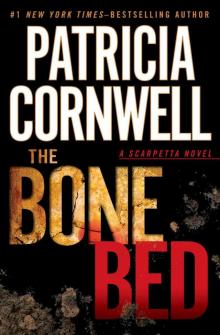 The Bone Bed
The Bone Bed Book of the Dead
Book of the Dead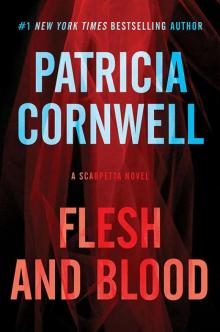 Flesh and Blood: A Scarpetta Novel (Scarpetta Novels Book 22)
Flesh and Blood: A Scarpetta Novel (Scarpetta Novels Book 22)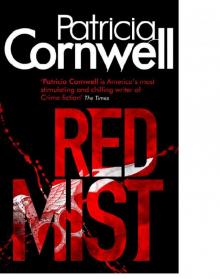 Red Mist
Red Mist Cruel & Unusual
Cruel & Unusual Hornet's Nest
Hornet's Nest Four Scarpetta Novels
Four Scarpetta Novels Scarpetta's Winter Table
Scarpetta's Winter Table Isle of Dogs
Isle of Dogs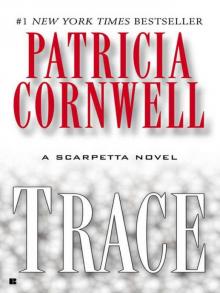 Trace
Trace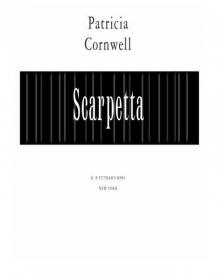 Postmortem
Postmortem Body of Evidence ks-2
Body of Evidence ks-2 Southern Cross
Southern Cross All That Remains
All That Remains Point of Origin
Point of Origin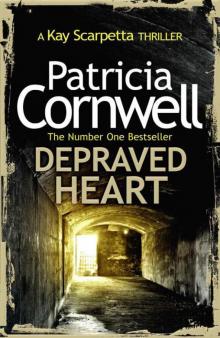 Depraved Heart
Depraved Heart Ruth, a Portrait: The Story of Ruth Bell Graham
Ruth, a Portrait: The Story of Ruth Bell Graham From Potter's Field
From Potter's Field Flesh and Blood
Flesh and Blood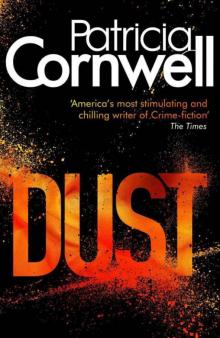 Dust
Dust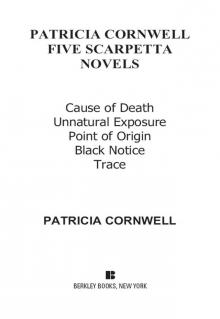 The Body Farm
The Body Farm Port Mortuary
Port Mortuary Quantum
Quantum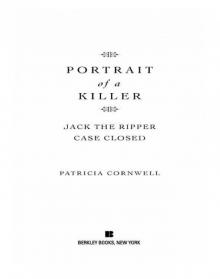 Portrait of a Killer: Jack the Ripper - Case Closed
Portrait of a Killer: Jack the Ripper - Case Closed Spin (Captain Chase)
Spin (Captain Chase) Cause of Death
Cause of Death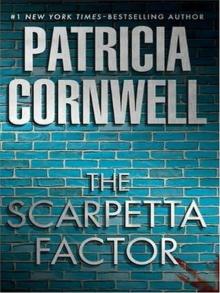 The Scarpetta Factor
The Scarpetta Factor Predator
Predator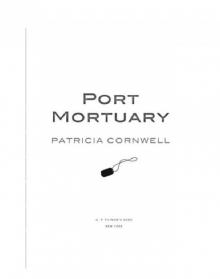 Scarpetta 18 - Port Mortuary
Scarpetta 18 - Port Mortuary Trace ks-13
Trace ks-13 Portrait of a Killer
Portrait of a Killer Cruel and Unusual ks-4
Cruel and Unusual ks-4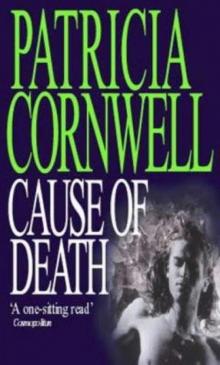 Cause Of Death ks-7
Cause Of Death ks-7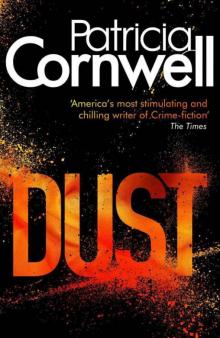 Dust ks-21
Dust ks-21 At Risk wg-1
At Risk wg-1 The Last Precinct ks-11
The Last Precinct ks-11 Book of the Dead ks-15
Book of the Dead ks-15 All That Remains ks-3
All That Remains ks-3 Ruth, a Portrait
Ruth, a Portrait Scarpetta's Winter Table (kay scarpetta)
Scarpetta's Winter Table (kay scarpetta) From Potter's Field ks-6
From Potter's Field ks-6 Scarpetta
Scarpetta Isle of Dogs jhabavw-3
Isle of Dogs jhabavw-3 Hornet's Nest jhabavw-1
Hornet's Nest jhabavw-1 The Body Farm ks-5
The Body Farm ks-5 Blow Fly ks-12
Blow Fly ks-12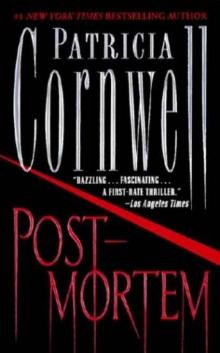 Post Mortem
Post Mortem Five Scarpetta Novels
Five Scarpetta Novels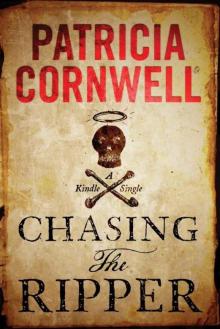 Chasing the Ripper (Kindle Single)
Chasing the Ripper (Kindle Single) Point of Origin ks-9
Point of Origin ks-9 Port Mortuary (2010)
Port Mortuary (2010) Unnatural Exposure ks-8
Unnatural Exposure ks-8 Southern Cross uhabavw-2
Southern Cross uhabavw-2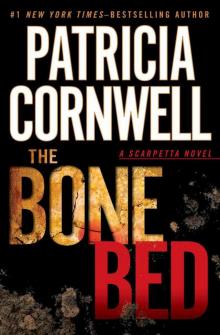 The Bone Bed ks-20
The Bone Bed ks-20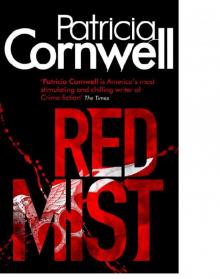 Red Mist ks-19
Red Mist ks-19 Port Mortuary (2010) ks-18
Port Mortuary (2010) ks-18 Predator ks-14
Predator ks-14